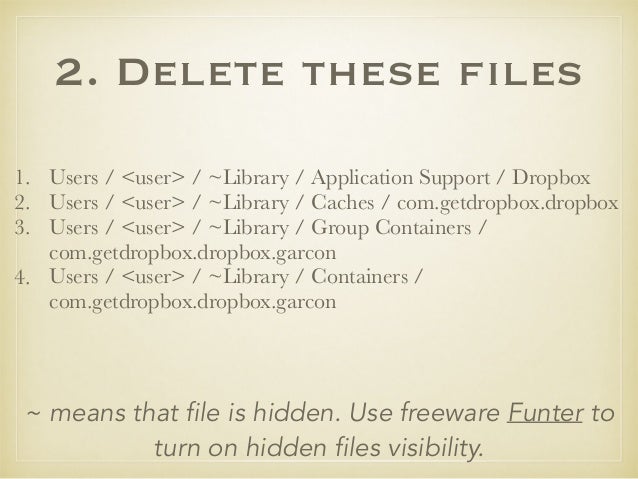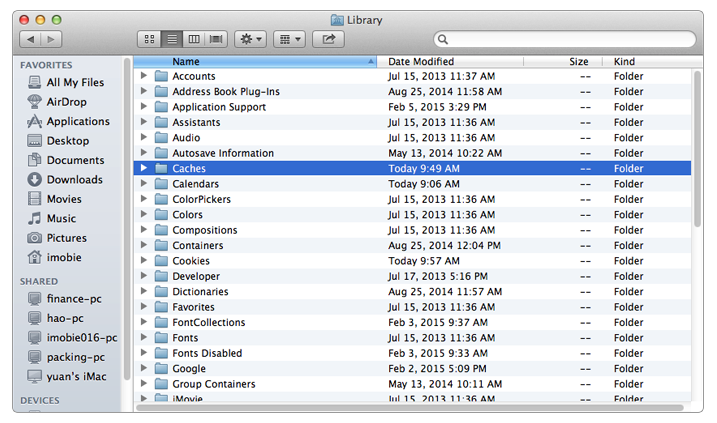Mac Can You Safely Delete Library Caches
Cache Files To delete your cache files, navigate to The Sims 3 in DOCUMENTS folder. Inside, will be a number of cache files. Delete any or all of these files you have. Yes, they would be re-generated when you next start Launcher or the game, that is by design. If you have installed or do activities related to remove. Jun 25, 2019 When the recovery process completes, you should be able to view all deleted caches, log and library files accurately recovered on your macOS. Almost all deleted data can be recovered safely if you exercise caution and act quickly.
You can delete app cache on Mac in the same way as user cache, by going to /Library/Caches and removing the insides of the folders with the app name. Proceed with caution! Not all app cache can be safely cleared. Removing Caches and other Temporary files can save space on your hard drive and in some cases even stop apps behaving erratically or sluggish. The following steps will show you how to safely remove Cache, Log and Temporary files from your system. Removing these files triggers the applications to build a new file when it’s. You can safely delete either photo library – only if you delete both of them will you lose access to your photos How to delete iPhoto library on your Mac Now that you understand why you might want to delete an old iPhoto library, and why you don’t necessarily have to, let’s talk about how to actually do it. Apr 17, 2017 FonePaw MacMaster is a Mac cleaner that can scan out application caches on your Mac and allow you to delete the caches. Comparing to the first method, using MacMaster allows you to: Clear other junk files besides app caches, including browser caches, system logs. It's also safe to just delete them all, but keep in mind you'll lose data that's written to the device like sqlite files you may want to use as a backup version. I once saved over 50GB doing this since I did so much testing on older iOS versions.
| Click here to return to the 'Delete caches and save disk space' hint |
---
zs
For an Intel equivalent of the disk space usage, try Disk Inventory, also free.
Also, to skip the typing everytime & for a graphical interface, these options are available in both maintenance tools of Onyx and iTweax.
The heavier-duty Onyx actually doesn't indicate the amount used by the Cache, which the light-weight iTweax does.

I recently recovered 5 gigs of hard drive space using Tiger Cache Cleaner. My iBook also starts up and runs noticeably faster now.
$ du -k ~/Library/Caches/ sort -n
Great for spotting where that space is going
(you may need to sudo it)
$ sudo -k ~/Library/Caches/ sort -n > du_cache.txt
to get a text file
 Doesn't work..
Doesn't work..---
Father of Jeremy Logan
---
Father of Jeremy Logan
just use a . (ie. period) in place of pwd.. and no quotes. FYI: in unix the . stands for the current directory and a . stands for the parent directory.
It's easier than that!
du -k sort -n
du defaults to the present directory
(Comparable to TreeSize on Win-Systems)
-- brf
---
--
Adam C.
I'm not sure if this hint has been posted before but if you get info on each application file there are installed language options. I went through all of my apps and deleted all of them except english. Most times this will halve the size of the app. Apple is notorious for installing 12 different languages for each app. I believe there is an apple script that does this automatically too.
Just be careful about deleting some application localizations. Some applications may have dependencies to those localizations. Some time ago, I remember a problem when someone tried to delete localizations, and they ended up having to reinstall that application.
The setup assistant includes a migration assistant. If your Mac starts up to a, which asks for details like your country, keyboard, and network, just continue to the next step.  Open Migration Assistant, which in the Utilities folder of your Applications folder.
Open Migration Assistant, which in the Utilities folder of your Applications folder.
Mac os import photos library. It’s actually very easy; here’s how. So, how can you export the actual library?
Yep, certain apps can mysteriously misbehave after you've deleted their language localization files. And Apple software updates can reinstall ones you've deleted so it's not necessarily a one-time removal routine.
I don't see any reason to risk removing those files unless reclaiming disk space is a necessity and there are no safer alternatives.
Mac Delete Cache Files
I can recommend Monolingual (monolingual.sourceforge.net), a neat little software that does just that - removes language resources you don't want/need. I've been using it for a couple of years now without problems (making sure never to remove any of the English varieties (my system language).
Anders
Just for reference, I will reiterate what has already been said about the long-term importance (or lack there of) of files in the ~/Library/Caches directory.
Recently I discovered a bug in an application (the producer of said application was 'some kind of fruit company' who shall remain nameless), and the top level tech that I was working with confirmed that its no big deal to delete the contents of the ~/Library/Caches directory.
I'm not advocating that you empty the directory and then lock the folder so that it can never be populated, nor am I advocating that you empty the directory at all. I'm simply stating that you can empty the directory and its not a big deal.
If your Caches folder is out of control, then you should think about some sort of cleaning.
For comparison purposes, here are the current sizes for my (Mac OS X created) Caches folders:
/Library/Caches
24.7 MB
/System/Library/Caches
11.6 MB
/private/var/root/Library/Caches
16 KB
~/Library/Caches
80.2 MB
The oldest directory within the ~/Library/Caches directory was modified Apr 4 2006.
Delete Cache Mac Os
I'd be cautious deleting ~/Library/Caches/Metadata because it contains Spotlight proxy files used by iCal, Safari, and other apps. Something will eventually trigger those files to be regenerated but before that happens Spotlight searching may be temporarily crippled. I discovered that awhile ago with Safari bookmarks and eventually deleted and restored the Bookmarks.plist file to force proxy files to be rebuilt after other methods had failed to do it.
Mac Can You Safely Delete Library Caches Free
First, a true confession: Until very recently (i.e. today) I didn't know about the need to periodically delete the cache and as a result, mine was gigantic.
I deleted the cache by dragging it into the trash and then emptying the trash. Then I told the computer to restart. I understand it takes awhile to rebuild the cache, but I'm not sure what 'awhile' means. It's been almost 2 hours now and I'm wondering if that's normal for the (gulp) years worth of stuff that was stored in my cache. How many hours should I let this continue before taking some other action?
Thanks for your help.